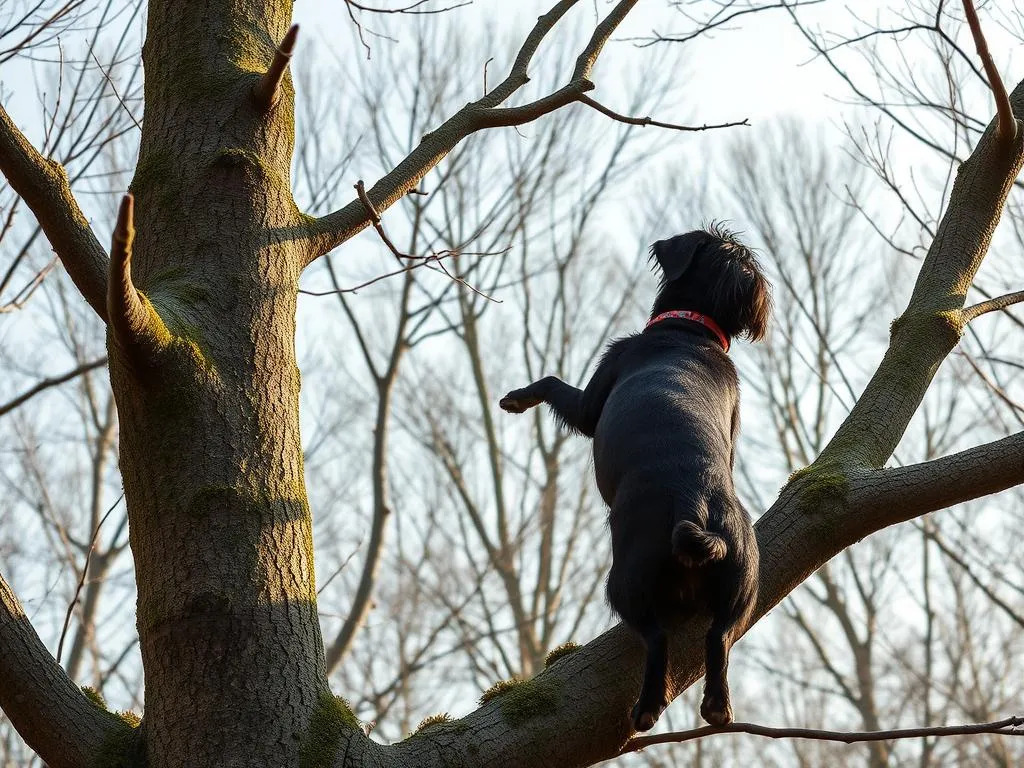
Understanding dog behavior is crucial for dog owners and enthusiasts alike. Dogs, with their unique instincts and adaptability, often exhibit a variety of behaviors that can surprise us. One question that intrigues many is: can dogs climb trees? This inquiry not only reflects curiosity about canine capabilities but also highlights the importance of understanding the reasons behind such behaviors.
The ability of dogs to climb trees isn’t a common topic of discussion, yet it opens a window into the intricacies of canine behavior. By exploring this question, we can gain insight into a dog’s instincts, physical abilities, and the factors that influence their climbing behavior. This article delves into the anatomy of dogs, their climbing abilities, safety considerations, and alternative activities that encourage healthy exploration.
Understanding Dog Behavior
Basics of Canine Behavior
At the core of understanding any animal is recognizing their natural instincts. Dogs, descendants of wolves, have retained many of their ancestral traits. These instincts dictate how they interact with their environment, their social structures, and their means of exploration. Dogs are naturally curious creatures, often eager to investigate their surroundings. This curiosity can lead them to engage in various behaviors, including climbing.
Types of Dog Behaviors
Dogs exhibit a wide range of behaviors grouped into several categories:
- Instinctual Behaviors: These include hunting, herding, and guarding. Such behaviors are driven by the dog’s instinct to survive and thrive in their environment.
- Social Behaviors: Dogs are pack animals, which means they thrive on social interaction. Their communication methods, whether through barking, body language, or facial expressions, are crucial for maintaining their social bonds.
- Exploratory Behaviors: Driven by curiosity and playfulness, dogs often explore their surroundings. This exploratory nature can lead them to climb or jump, especially when they are excited or seeking out something intriguing.
The Anatomy of Dogs and Climbing
Physical Attributes
To understand whether dogs can climb trees, we must consider their physical attributes. Dogs possess strong limbs, flexible bodies, and powerful muscles, all of which contribute to their agility. However, unlike tree-climbing animals such as cats or monkeys, dogs lack certain anatomical features, like retractable claws, that facilitate climbing. Their paws are designed for running and digging, not necessarily for gripping and climbing.
Comparison with Tree-Climbing Animals
Tree-climbing animals like cats and squirrels are equipped with features that enhance their climbing abilities. For instance, cats have sharp, retractable claws and a flexible spine that allows them to climb with ease. Squirrels have long limbs and sharp claws that help them navigate tree branches. In contrast, while some dog breeds may exhibit remarkable agility, their physical structure is not optimized for climbing trees in the same way these animals are.
Can Dogs Climb Trees?
Tree Climbing Abilities
The general consensus among dog behaviorists is that while dogs can climb trees, they are not as proficient at it as some other animals. Dogs may attempt to climb trees motivated by curiosity or the instinct to chase prey, such as squirrels. However, their success largely depends on several factors, including the dog’s breed, size, and agility.
Notable Breeds and Their Climbing Skills
Some dog breeds are naturally more agile and athletic than others, which can influence their climbing abilities. Breeds like Border Collies, Australian Shepherds, and Jack Russell Terriers are known for their exceptional agility and energetic nature. There are anecdotal accounts of these breeds climbing low-hanging branches or even scaling small trees to reach their prey.
For example, a Border Collie may chase a squirrel up a tree, demonstrating remarkable jumping and climbing skills. However, it’s essential to note that most dogs will not climb trees in the same way that cats or other climbing animals do. Instead, they may jump or scramble awkwardly, risking injury in the process.
Reasons Dogs Might Climb Trees
Dogs may attempt to climb trees for several reasons:
- Instinct to Chase Prey: The most common reason is the instinctual drive to chase after small animals. If a dog spots a squirrel or a bird, their instinct can compel them to try to climb a tree to catch it.
- Curiosity and Exploration: Dogs are inherently curious creatures. They may climb trees or attempt to do so out of sheer curiosity, wanting to explore every nook and cranny of their environment.
- Social Behaviors: Dogs often mimic the behavior of other animals. If they see another animal climbing or playing around a tree, they may feel compelled to follow suit.
Safety Considerations
Risks of Tree Climbing
While it may seem entertaining or harmless for a dog to attempt to climb a tree, there are several risks involved.
- Potential Injuries: Dogs can sustain injuries from falls or scrapes while attempting to climb. Their bodies are not built to navigate branches, leading to potential accidents.
- Health Hazards: There are various health risks associated with climbing, such as exposure to toxic plants or parasites that may inhabit trees.
Training and Supervision
To mitigate risks, it’s vital for dog owners to train their pets and supervise their play. Training can help discourage dangerous climbing behaviors, ensuring a safe outdoor experience. Here are some tips for supervision:
- Monitor Playtime: Always keep an eye on your dog during outdoor activities. If they show interest in climbing, redirect their attention with toys or activities.
- Establish Boundaries: Teach your dog commands that establish boundaries and discourage climbing attempts.
Encouraging Healthy Exploration
Alternative Activities
Instead of climbing trees, there are plenty of activities that can satisfy a dog’s curiosity while keeping them safe. Engaging your dog in structured play can be beneficial:
- Agility Courses: Set up an agility course in your backyard. This allows dogs to jump, weave, and navigate obstacles without the risks associated with tree climbing.
- Scent Games: Dogs love to use their noses! Hide treats around your yard or home and let your dog sniff them out. This can be mentally stimulating and fulfilling.
Environmental Enrichment
Creating an engaging environment is essential for a dog’s mental well-being. Consider the following strategies to enrich your dog’s surroundings:
- Interactive Toys: Invest in toys that challenge your dog’s problem-solving skills. Puzzle feeders can keep them occupied and mentally stimulated.
- Varied Walks: Change your walking routes to expose your dog to different scents, sights, and sounds. This variety can satisfy their exploratory instincts without the need for climbing.
Conclusion
In summary, while can dogs climb trees is a fascinating question, the answer is nuanced. Dogs may attempt to climb trees, particularly motivated by instinctual drives like chasing prey or curiosity. However, their physical anatomy limits their climbing capabilities compared to other animals.
Understanding dog behavior is essential for promoting safe exploration and play. By offering alternative activities and ensuring a safe environment, dog owners can encourage their pets to satisfy their curiosity without the risks associated with climbing trees. Emphasizing the importance of training and supervision will further enhance your dog’s outdoor experiences while keeping them safe and happy.









